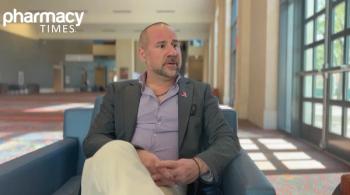
Communication Is Critical for Effective COVID-19 Immunization in a Hospital Pharmacy
Pharmacy Times® interviewed Michael Flannery, PharmD, the assistant director of pharmacy operations at the University of Rochester Medical Center, on the process for immunizing staff at a hospital pharmacy with the COVID-19 vaccines.
Pharmacy Times® interviewed Michael Flannery, PharmD, the assistant director of pharmacy operations at the University of Rochester Medical Center, on the process for immunizing staff at a hospital pharmacy with the coronavirus disease 2019 (COVID-19) vaccines.
Alana Hippensteele: Today, I’m speaking with Michael Flannery, the assistant director of pharmacy operations at the University of Rochester Medical Center, on the process that the University of Rochester Medical Center has developed pertaining to the COVID-19 vaccines that have recently been granted Emergency Use Authorizations, or EUAs, from the FDA in the United States.
So, Michael, when is the University of Rochester Medical Center expecting to begin receiving and administering the recently authorized COVID-19 vaccines?
Michael Flannery: Sure, Alana. We actually received our first shipment last Monday, the 14th of December. It was the shipment from Pfizer is a Pfizer vaccine for the 195 vials. Shortly after receiving it, we actually started injecting it in into our employees.
So, we started a clinic that afternoon, ran a clinic the next day, and continued to administer doses to our staff here at the hospital to a tune of about 1300 doses the first week.
Alana Hippensteele: Wow, yeah. That's amazing. What are the University of Rochester Medical Center's plans for carrying out the organization and planning for these vaccinations?
Michael Flannery: Sure, obviously. A lot of it relates to the quantity and the amount of vaccine we have. We did receive Moderna vaccine yesterday, and then we also received the second shipment this morning of the Pfizer vaccine.
So working with the New York State Department of Health and the guidelines that they set forth, our employee health is handling the majority of this working with the hospital administration nursing, pharmacy, and a number of other departments, and we've really come up with that true interdisciplinary team to work through the undertaking.
Obviously, communication has been big, as far as being successful. Multiple zoom meetings are held daily, pre-clinic huddles [that are] socially distanced, obviously, and then frequent check-ins throughout the clinics has really made the clinics go very smooth.
We developed a process that streamlines a linear flow for our employees when they come in to receive their vaccine, making sure again that we're staying socially distanced. We are scheduling appointments to keep a consistent flow throughout the clinic time. And we're also scheduling staff members for their second dose right when they register for their first dose, so, again, working with the employee health folks and coordination with the Department of Health, the template they're providing, or the matrix they're providing, for what staff are eligible to receive it, has really been our mode so far. So, communication has been the big factor that's helped with the success of this.
Newsletter
Stay informed on drug updates, treatment guidelines, and pharmacy practice trends—subscribe to Pharmacy Times for weekly clinical insights.


















































































































































































































